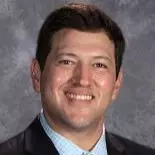A fully functional HVAC system helps millions of people stay comfortable in their homes all year round. But these HVAC systems, no matter how simple or complex, typically rely on a series of components and electrical wiring. With proper HVAC training, you can understand and fix these vital components, helping people enjoy a nice indoor environment regardless of the weather. Let’s explore the main HVAC electrical components you’d come across as a technician.
Main Parts of HVAC Systems
A typical HVAC system is composed of three main parts: heating, ventilation, and air conditioning. Most systems will use a furnace or boiler for residential purposes. The furnace or boiler will heat circulated air that will later be distributed throughout the home.
Next, the ventilation system will move the heated or cooled air in or out of the home. An air handler can push air into the system and distribute it around the home through air ducts. Somewhere along the ventilation system should be an air purification system that helps reduce allergens or air contaminants.
The third main component of an HVAC system is the air conditioning (AC) system. This part is responsible for cooling the air inside a home. To cool air, the AC system will use condensing units and evaporator coils to remove heat from the air by running it through a cold fluid. Then the air is allowed to make its way to internal circulation.
Electrical Components of an HVAC System
Capacitor
This HVAC component stores and absorbs electrical energy from the main supply. The capacitors will maintain a constant power supply to run efficiently and start and run fans when needed. A capacitor unit has a starting capacitor, which powers up the motor for cooling cycles, and a running capacitor, which keeps the motor going at a steady pace.
Contactors
This component will control the electricity flow in the AC system. One of its main functions is cutting off the power or supplying it whenever needed. When the cooling system is off, the contractor will maintain an ‘up’ position to cut off power. As soon as cycling begins, the thermostat will signal to the contractor, causing it to hit the ‘down’ position and allowing power to flow.
Relays
This component dictates the amount of time between the opening and closing of the electrical circuits, allowing the flow of current in the AC system. Time delays let the blower motor continuously run, despite the compressor being off. As the motor continuously runs, it will use the cooling effect on the evaporator, which produces additional chilled air and improves efficiency.
Fan Motor
This component is what moves air in and out of the home. As the fan runs, it circulates air within rooms, helping maintain temperatures, humidity levels, and air quality. The fan motor has overload protection within its windings that helps prevent significant overheating damage.
Crankcase Heater
The crankcase heater is an electric resistance heater connected to the AC’s main supply. This component may be operational even when the system is off. The crankcase heater keeps the refrigerant at a temperature that is slightly higher than the coldest part of the system. It also prevents the refrigerant from making its way back into the condenser.
Thermostat
Just about everyone is familiar with the functions of the thermostat. It monitors and controls indoor temperatures. When the indoor temperature drops below the set temperature, the thermostat contacts will close, which causes the contactors to signal the compressor to turn on. Once the set temperature is reached, the thermostat contacts open, shutting down the compressor.
Pressure Switches
Pressure switches act as a safety component, monitoring variations in refrigeration pressure and protecting the compressor from significantly low or high pressures. High pressure can induce overheating, and low pressure can cause mechanical damage. If the pressure change is sudden, the switches will tell the contractor, which turns off the compressor.
Want to become an HVAC Technician?
Learn from professionals who are experts in their fields
What Electrical Symbols Mean
- The overload symbol—in an overload condition, this safety switch will pop open.
- The transformer symbol—shows the primary and secondary winding and indications of a ferrous core.
- The round symbol—is used for coil and for motors
- The thermostat symbol—indicates the switch will open and close due to temperature changes.
Air Conditioning Repair Techniques
- Check for a tripped fuse in the breaker.
- Inspect the thermostat to see if it’s in the on or off position. Check the temperature setting. Is it possible the thermostat just needs new batteries?
- Check the air filter and change if necessary. This should improve efficiency and airflow.
- Look for ice in the unit. If so, set the system to fan so the ice can melt, or turn the unit off and allow the ice to melt.
- Are the ducts and registers dirty? Clean them out so that air can flow freely. And check that the registers are clear and open.
Request Information about HVAC Programs
According to the Bureau of Labor Statistics (BLS), HVAC technicians are expected to add over 40,000 positions annually over the next decade. That means those with the right training and education can start a career in an in-demand profession.
Does a career as an HVAC technician seem like the right fit for you? Then you should get started with an HVAC training program at a school near you. At Erie Institute of Technology, we offer an HVAC/R Technician program that you can complete in as little as one year. Gain hands-on experience and knowledge of HVAC components and repair that’ll help you stand apart. Learn more about the program today.

Ross Aresco
CFO
Ross Aresco is the CFO of Erie Institute of Technology. Erie Institute of Technology (EIT) is an Erie Pennsylvania technical/trade school providing training programs for medical, computer, electronics, manufacturing, and technology careers. EIT offers programs in many different areas to suit your interests and talents.
